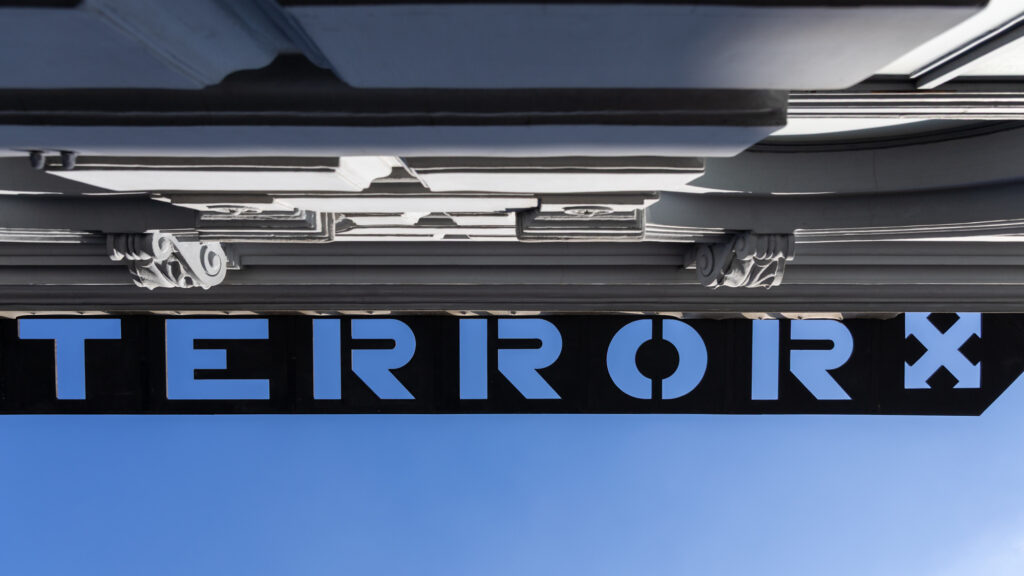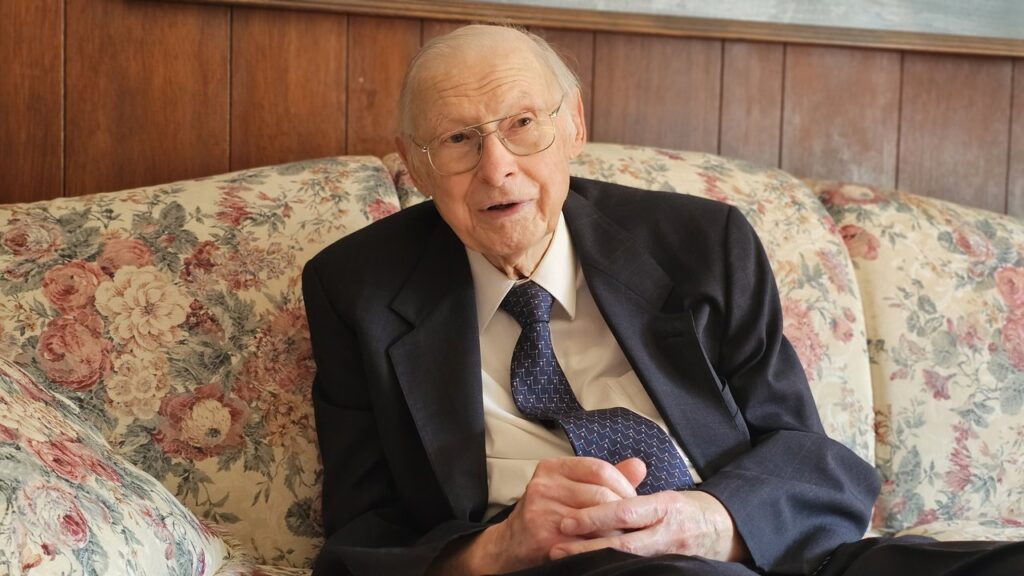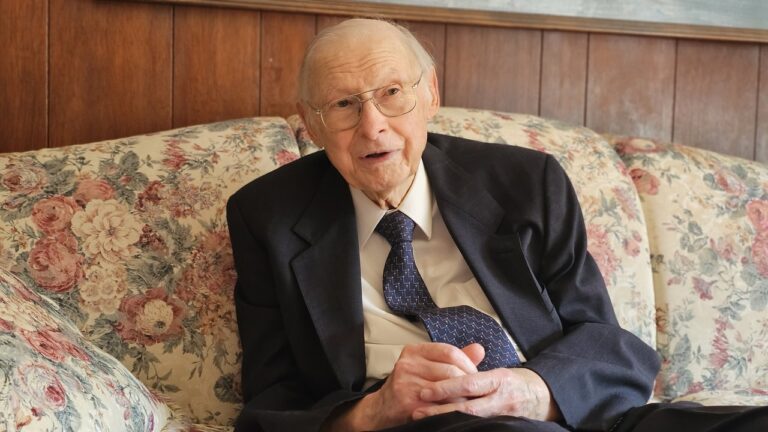This is an abridged version of the original interview published in Reformátusok Lapja on 31 March 2024 and online on reformatus.hu on 16 April 2024.
Lóránd Csiki-Mákszem initially planned to become a doctor, but ended up studying at the local Reformed High School, where he discovered and met his calling and his wife. Born in Kézdivásárhely (Târgu Secuiesc, Transylvania, Romania), the pastor and his wife, Enikő, a teacher, first moved together to Kolozsvár (Cluj), then to Vízakna (Ocna Sibiului) near Nagyszeben (Sibiu). After 12 years of service there, when his wife won the United States Green Card lottery, they relocated to America during the COVID pandemic. Their journey first took them to Cleveland, Ohio, before they eventually settled in Miami, Florida.
***
How did you become a pastor?
I intended to apply to the medical university in Marosvásárhely (Târgu Mureș) from an early age, but at the time, no biology-chemistry class was available at my local high school. As a result, I chose the theology-philology program at the Reformed High School. I quickly felt a calling to pastoral ministry and soon set my sights on the theological university in Kolozsvár (Cluj). I also met my wife at the high school, since the teacher training program was still operating in the same building at the time where Enikő, originally from Bereck (Brețcu), studied. She later enrolled at Babeș–Bolyai University in Kolozsvár, majoring in history. We got married after I completed my theological studies in 2006. During my last two years at the university, I assisted with the ministry in the Hídelve congregation near Kolozsvár, where I also spent two years as an assistant pastor. We wanted to stay in Kolozsvár for the longer term, and I was also interested in learning translation—I had spent two summers in the U.S. during my university years, convinced that translating theological works could benefit the Hungarian Reformed clergy in Transylvania. However, this idea was not supported, so after passing my final pastoral exam, we were placed in the Vízakna (Ocna Sibiului) congregation.
We spent 12 of the most beautiful years of our youth there, despite arriving during a difficult time. My predecessor had been forced to leave, which left a bitter feeling among the congregation members. Even Bishop Géza Pap asked if I was sure I wanted to take on that position, warning that it was a tough congregation. He added that if we had any problems, I should call his deputy. In 2014, when Bishop Béla Kató visited the congregation—the first bishop’s visitation in nearly a century—I greeted him with these words: ‘With respect and joy, I report I never had to make that call because this community longed for nothing more than love: a pastor who genuinely cares for his congregation.’
Why did you choose Vízakna?
It was clearly God at work, as I had no prior connection to the town. I learned that Vízakna is a town of only about 4,000 people, which received town status due to its salt lakes. About 10 per cent of the population is Hungarian; roughly 350 Reformed and 50 Catholic community members. My wife became a teacher in the local Hungarian-language class. There were challenging years when she had to teach and nurture five different grade levels all at once, from preparatory to fourth grade. After our daughter, Beatrix, was born, effectively, no more children were born in the local Hungarian community, and eventually, the Hungarian kindergarten closed. During our last two years, we fought hard to keep the Hungarian school class open. The Romanian principal did everything he could to support it, but after we left, the class was shut down. We served there during a golden period, when there were many children and significant activity within the congregation. When we arrived, around 40 children attended youth and religious education classes. When I took over, the Vízakna Reformed congregation had 315 registered members; today, as far as I know, it has dipped under 300, due to the lack of births. However, the number of children is now slowly increasing again. There is also some middle-aged and young adult presence of Hungarians, as nearby Szeben (Sibiu) offers job opportunities. This is a great help, but making a living there is not easy. Fewer young people today choose to have more than two children.
What has been done during those 12 years?
One of our greatest achievements was building the Youth House in the churchyard. The old building was a coffin workshop and was falling apart, and our Dutch sister congregation wanted to cooperate on a summer project with us that would bring some long-term results. Although the congregation already had a large community hall, it lacked a smaller youth space, so we built one together. We completed the building in 2012, and Bishop Géza Pap consecrated it. Meanwhile, we faced constant struggles over the restitution of the church properties confiscated previously by the Romanian Communist regime. Vízakna’s Hungarian Reformed community was once large and prosperous, with numerous properties, over a 1000 members, two parsonages, and two pastors. Under the Communist era, the teacher’s residence and the old parsonage were confiscated. We managed to reclaim these buildings, but securing our title required additional lawsuits. Once we finally became registered owners and took possession as well, a serious renovation was necessary, since these buildings were in unusable condition. Thanks to God, my successor, Levente Béres, who arrived in December 2020, was able to complete the renovation project, transforming the site into a Youth Camp Center.
‘This community longed for nothing more than love: a pastor who genuinely cares for his congregation’
Additionally, with self-funding and small grants, we replaced the entire roof of the church’s main nave. The restoration of the church tower was partly financed by Dutch support. This beautiful fortified church, built in the early 13th century, is an A-category historic monument, making its restoration a complex challenge. It blends Romanesque and Gothic styles, as parts of it were destroyed during the Turkish-era conflicts and rebuilt later. The church also features wall frescoes. When it was included in a heritage restoration program, the first step was a full archaeological excavation. The findings revealed not just two, but three crypts beneath the current building. Additionally, archaeologists suspected there had been an even earlier church at this site, though it wasn’t found. However, they unexpectedly discovered the remains of a 15th-century chapel, including parts of its walls and columns, near the vaulted section. It was an incredible experience to realize how ancient the Vízakna community truly is.
Leaving such a place must have been difficult…Why did you move to the U.S.?
We didn’t leave because of problems—by then, congregational life was thriving. We had launched the Vízakna Hungarian Days with support from Hungary’s Bethlen Gábor Fund, and the event has since become a tradition. Vízakna has great tourism potential, and both the current and previous mayors have managed the town well, successfully applying for significant EU and other funding. Hungarians in the area are also trying to take part in the local economy—there are Hungarian vendors selling chimney cake (kürtőskalács) and other goods around the salt lakes. Romanians call Vízakna ‘Transylvania’s Seaside’ due to these salt lakes.
Several factors influenced our decision, including the declining number of children and our struggles to keep the Hungarian class open. However, the decisive moment came when my wife won the U.S. Green Card lottery. As a student, I had spent two summers in Virginia, where I saw people travel an hour or more just to attend a Hungarian church service, while in our region, people wouldn’t even walk to the neighboring church. We don’t keep in touch with the pastors I met back then, but that experience stuck with me—I realized that Hungarian communities in America also need pastors.
When my wife’s name was drawn in the lottery, we said to ourselves: ‘This cannot be a coincidence. We must take this opportunity.’ But it wasn’t an easy decision. We spent a long time weighing our options. Preparing for the move and traveling was even more difficult and adventurous due to the outbreak of the COVID pandemic. As Bishop Csaba Krasznai put it at our first service in Cleveland, Ohio, on 15 July 2020: ‘Without God’s will, this journey would have been impossible.’
How and why did you end up in Cleveland?
When we received our green card, I wrote to him about our situation. Looking back, it’s particularly interesting that Rev. Péter Pál Bodor, a pastor in Sarasota, Florida, was also present during our first conversation. They offered me two options: I could become the assistant pastor to the bishop in Cleveland, or I could work with the new pastor in Sarasota, helping with plans to establish a new congregation. The second option would have involved a lot of travel, and since we had just gone through a big move, we chose the more stable option, Cleveland. So, on weekends, I served alongside Csaba Krasznai, and during the week, I worked. This is how I ended up with the Bőjtös family, preeminent representatives of the Hungarian community of Ohio, helping take care of Laci bácsi (Uncle Laci), the first Honorary Consul of Hungary in the U.S., until his passing on 23 February 2021.
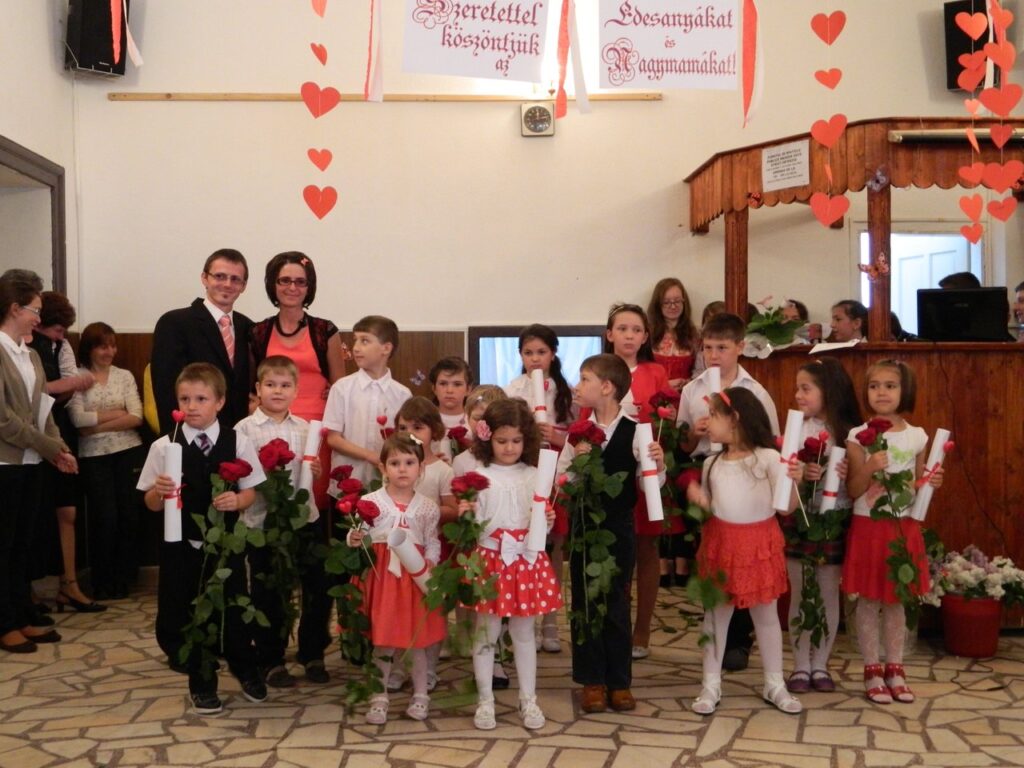
The support and spiritual guidance we received from the Krasznai and Bőjtös families helped us tremendously in adjusting to our new life. Even though I had already served as a pastor for 14 years, the first six months were not easy. I learned a great deal, which helped me understand both the social and religious life here. It was during that time that I truly understood the difference between church life in Hungary and in America. On Saturdays, we explored the beautiful state of Ohio with church families, engaging in long conversations about all kinds of topics. On Sundays, I started with smaller roles in services, leading prayers, but as time went on, the bishop entrusted me with more responsibilities. Together, we led confirmation classes and online Bible studies—the latter of which we still hold today, alternating leadership.
What are your memories of the Bőjtös family?
The humanity and humility that one learns from caring for a terminally ill person stay with you for life. I wouldn’t send newly graduated pastors straight into a congregation; instead, I’d have them spend a year in social work to learn what it truly means to care for a person. I never got to know László Bőjtös as the Cleveland Hungarian community knew him. By the time I met him, his health had severely declined in his final year. However, living next to him and his wife and watching the interviews recorded with him, I learned about his rich life journey and his vast literary and historical knowledge. Through him, I gained a deep understanding of the entire chain of events of 1956, for example.
Even after his passing, I had the opportunity to see his life’s work—when Enikő helped his widow, Györgyi, go through and organize his entire document archive. Because of Laci bácsi’s enormous personality and achievements, it might seem like Györgyi was in the background. However, the saying holds true for them as well: ‘Behind every successful man stands a strong woman.’ His wife was the driving force, the one who pushed him forward, supported him completely, and provided encouragement and the background support he needed. Their home was always open to Hungarian writers, poets, literary scholars, and public figures. Their guest books are treasures—Györgyi, who turns 90 this year, can quote from them effortlessly, and I also took many thoughts from them. To this day, we remain like family to each other.
‘The lack of stability takes a toll on any community, even in Hungary, let alone among Hungarian Americans’
How did you end up moving to Florida, and what did you find in Miami?
At the time, there wasn’t a position available where I could serve long-term, so when the Florida opportunity arose, we applied. We came for a trial service in May 2021, and on 6 June, the congregational assembly unanimously elected me as pastor. We were welcomed by a historic congregation founded in 1948, though its last ten years had been a rollercoaster—sometimes they had a pastor, sometimes they didn’t. The lack of stability takes a toll on any community, even in Hungary, let alone among Hungarian Americans.
What differences do you see between Hungarian and American congregations?
In Hungary or broadly in the Carpathian Basin, most Hungarian congregation members share the same cultural background: they speak the same dialect, think similarly, follow the same traditions, and live a common lifestyle. Here, however, communities are mixed, with members coming from all over the Carpathian Basin and beyond. Our congregation is called The First Hungarian United Church of Christ, or simply Christ’s Hungarian Church, Miami. The name doesn’t specify a denomination—even though in its beliefs, teachings, and church law, it is a Reformed congregation, many of our members are actually baptized as Catholics. This is because there is no Hungarian Catholic church or community anywhere in Florida. We try to bridge denominational differences, and we rarely even mention them anymore. However, cultural differences are much harder to navigate—everyone brings their own traditions and wants to incorporate them, and we have to find common ground.
Another challenge is the enormous geographical distances. Miami is a global city, and since the COVID pandemic, 500,000–600,000 people move to Florida every year, many settling near Miami. As a result, population density and traffic congestion have increased significantly. Unlike Ohio, New Jersey, or New York, Florida has never had a densely populated Hungarian neighborhood. There are very few Hungarians left in Miami itself—families typically move north to neighboring counties. Because of traffic and distance, it is becoming increasingly difficult to bring people together. As a result, our congregation has been considering relocating the church further north, where it would be closer to our active members and could serve the Hungarian community in South Florida more effectively. Plans are already being made, and we are waiting for the right opportunity.
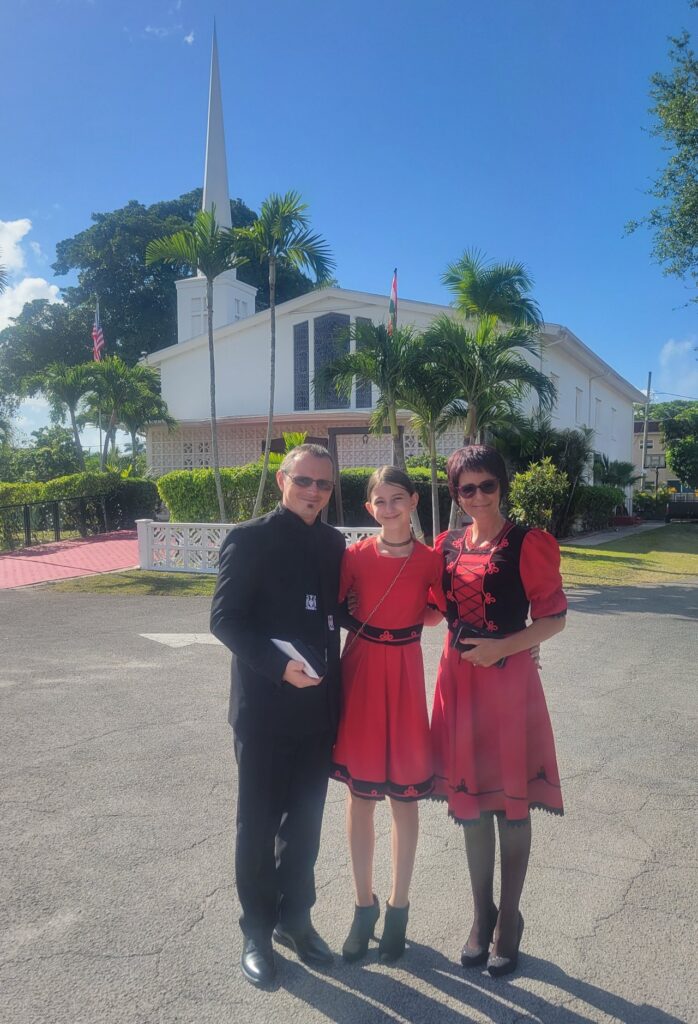
What properties would be affected by the move, and how large is the congregation currently?
The Kossuth Community Hall was built in 1952, while the church building itself was built in 1955. The church’s financial support comes from a property complex built in 1969, which includes 32 apartments. The rent received from letting the apartment complex doesn’t make us wealthy—it simply ensures survival. In 1991, the Petőfi Hall was built for youth activities. If we relocate, we’ll need to sell these properties and use the funds to build a new church complex. However, we must also replace the financial resources that the properties currently provide—this was a condition of the congregational vote approving the move.
When we arrived, we had 42 voting members; nowadays, we have 71. Most of them are elderly; there are fewer middle-aged and younger members, and even fewer young families with small children. Miami is an enormous missionary field. Over 100,000 people of Hungarian origin live in Florida, but they’re scattered across the state, so it’s very difficult to reach them. Younger generations are increasingly less willing to engage in active community work. We use modern technology in services, including projectors, to make sermons more engaging. We also try to incorporate more contemporary worship songs into our repertoire. Our church organizes both religious and secular events, including Harvest Ball, St. Elizabeth & St. Catherine Ball, New Year’s Eve Party, St. Stephen’s Day, and Hungarian National Day Picnics and Valentine’s Day Musical Afternoon. These events attract people who otherwise wouldn’t attend church, and we use them for outreach—starting each event with a short prayer and greeting. We always make it clear: this is a church-organized event, and we warmly invite everyone not only to the balls and other social events, but to our services as well. Some church members first attended only social events, then gradually became involved in religious life. Our newest idea is to hold an outdoor worship service in April, combined with a picnic in a public park.
It sounds like you’re planning for the long term in Miami…
Yes, we do. My wife is studying, so she could use her teaching degree here. As a pastor’s wife, she is actively involved in church life and helps manage our properties. The congregation hoped we weren’t coming with short-term plans, and our expectations met with theirs on that point, too. We also need stability, because you cannot build a community in the short term. There are challenges and difficulties, as everywhere, but the congregation has fully embraced us as family. We have also fallen in love with Florida—though we haven’t faced a hurricane yet, we accept it as part of life here. The year-round warmth and greenery are invaluable. If this isn’t enough for someone, nothing ever will be.
Read more Diaspora interviews:



